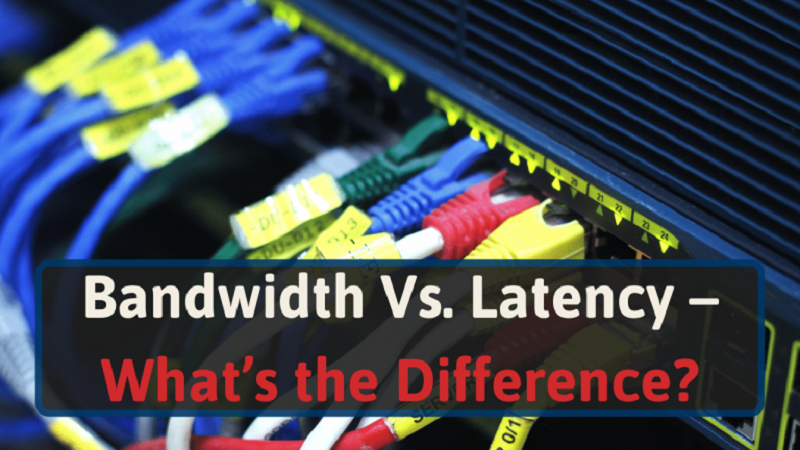
Network Latency vs. Bandwidth: Demystifying the Relationship
Businesses rely heavily on network connectivity to operate efficiently in today’s digital landscape. Two key factors that significantly impact network performance are latency and bandwidth. While they may sound similar, network latency and bandwidth play distinct roles in determining the overall network performance. In this blog, we will delve into the concepts of network latency and bandwidth, clarify their differences, and explore how they interrelate in networks.
Understanding Network Latency
Network latency refers to the delay or lag in data transmission over a network. It is commonly measured in milliseconds (ms) and can be affected by several factors, including the physical distance between network nodes, network congestion, and network equipment quality. Latency can be subdivided into three main components: transmission latency, processing latency, and propagation latency.
Transmission latency occurs when data packets traverse the network infrastructure, including routers, switches, and cables. The physical distance between network nodes plays a crucial role in determining this type of latency.
Processing latency involves the time taken by network devices, such as routers or switches, to process and forward data packets. Network congestion and device performance directly affect processing latency.
Propagation latency refers to the time it takes for data packets to travel from the source to the destination. It is influenced by the speed of light or electricity over the medium through which data is transmitted.
Understanding Bandwidth
On the other hand, bandwidth represents the maximum data transfer rate of a network connection. It is typically measured in bits per second (bps) or its derivatives, such as kilobits per second (Kbps), megabits per second (Mbps), or gigabits per second (Gbps). Bandwidth determines the capacity or volume of data that can be transmitted over a network in a given time frame.
Bandwidth can be compared to a highway, where the number of lanes determines the maximum number of vehicles passing through. Similarly, a higher bandwidth allows more data to flow simultaneously, increasing the network’s capacity for data transmission.
Interplay between Latency and Bandwidth
Although latency and bandwidth are related, they are distinct concepts in network performance. While both contribute to overall network efficiency, they impact different aspects of data transmission.
Network latency affects the responsiveness and speed of data delivery. High latency can result in delays in data transmission, leading to slower application response times, video buffering, and reduced user experience. It can be particularly problematic for real-time applications like video conferencing, voice-over IP (VoIP), or online gaming, where low latency is crucial for smooth interactions.
On the other hand, bandwidth determines how much data can be transmitted within a given time. Higher bandwidth allows faster file transfers, faster downloads, and smoother streaming experiences. It is especially important in scenarios where large amounts of data need to be transferred, such as cloud computing, data backups, or multimedia content distribution.
While high bandwidth can improve data transfer rates, it does not directly address latency issues, and increasing bandwidth alone may not necessarily reduce latency. However, optimising network infrastructure, reducing congestion, and utilising efficient routing protocols can help minimise latency.
In short, network latency and bandwidth are two vital aspects of network performance. While latency focuses on the time delay in data transmission, bandwidth determines the data transfer capacity. Both factors contribute to the overall efficiency of a network, and their optimisation is crucial for businesses relying on uninterrupted and high-speed data communication. Organisations can make informed decisions to improve their network performance, enhance user experience, and support their digital operations by understanding the differences and interplay between latency and bandwidth.


